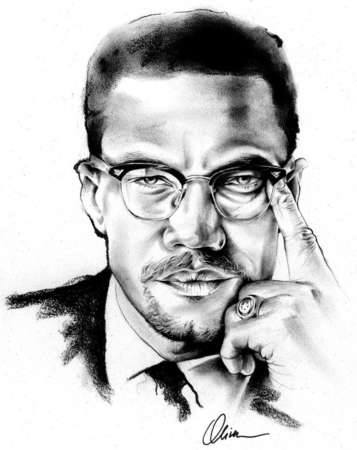A seat at the table
In Brief: The Reach of the Black Dollar

When you spend your dollar out of the community in which you live the community in which you spend your money becomes richer and richer; the community out of which you take your money becomes poorer, and poorer. -- “The Ballot or the Bullet” (1964) Malcolm X
When I was a kid, the only smell enticing enough to coax me from my fourteen-hour slumber was blueberry pancakes. They were smothered in so much butter it left a trail from the skillet to the plate. But, the most fun part was giving it a “healthy” dose of Aunt Jemima’s original syrup (Can’t you just smell it right now?).
I always thought Aunt Jemima was some sweet old Black lady, who started out by humbly selling jars of her family’s generational recipe. You know, her neighbors and family convinced her after many years of nagging that she should start charging people for her syrup. Well Spoiler alert! This crushed my heart too!
“Jemima” was meant to embody the caricature of a “mammy”, a concept the White men who created the product have been profiting off of for over 126 years… And yet there is nothing profound or new about this. Yes.. Jemima is a fraud and there isn’t even a Black owned business making a little money off this debacle! Sad truths. But, this did make me question, as Black consumers, how much does the money we spend affect the economy and more importantly our communities?
Times are indeed changing. Rihanna’s Fenty Beauty took the Beauty Industry by storm. Black women in Alabama slayed at the ballots and took down public enemy Roy Moore. Black consumers have shown companies that simply “showing up” isn’t enough and if they want the Black dollar they will have to work harder for it.
And yet, the socioeconomic gap between ethnic groups in America still remains a crippling issue. The median income in a White household in America is 164% greater than their Black counterparts (statista.com). While Black Americans are only 13.3% of the population, we make up almost 33% of people affected by poverty (stateofworkingamerica.org). This disparity stems from systematic policies over centuries that enforced the advancement of Whites. In his famous speech “The Ballot or Bullet”, Malcolm X explains the importance of reinvesting in the Black community, the idea that buying Black puts more money in the hands of Black people and ultimately will build inheritance and jobs. It’s all about making Black people providers rather than simply consumers.
According to Nielsen’s “Black Impact: consumer Categories where African Americans Move Markets”, Black Americans spend $1.2trillion annually and in many cases represent 50% of total category spend such as in dry grains and vegetables. As well as in other cases like essential items such as personal soap and bath needs ($573 million) or feminine hygiene products ($54million), Black Americans have an outsized influence over spending when compared with census representation. Nielsen also reports, “Black consumer choices have a ‘cool factor’ that has created a halo effect, influencing not just consumers of color but the mainstream as well “.
Though marketing strategies may be better at targeting Black consumers, the fact remains that the Black consumer has a ton of power when it comes to where and how we choose to spend. And if mobilized on a connected agenda, we further promote the advancement of the people.
Stay tuned for more articles giving you at a look at Black $$ power and check out our about page for more information on how you can mobilize and revolutionize.
--OT out
Works Cited
- Median Household Income by Race or Ethnic Group 2016 | Statistic. Statista
- Mcgrit, Ellen. “Black Impact: Consumer Categories Where African Americans Move Markets.” - What People Watch, Listen To and Buy, 28 Feb. 2018
- “Poverty.” State of Working America
- “QuickFacts.” U.S. Census Bureau Quick Facts: UNITED STATE